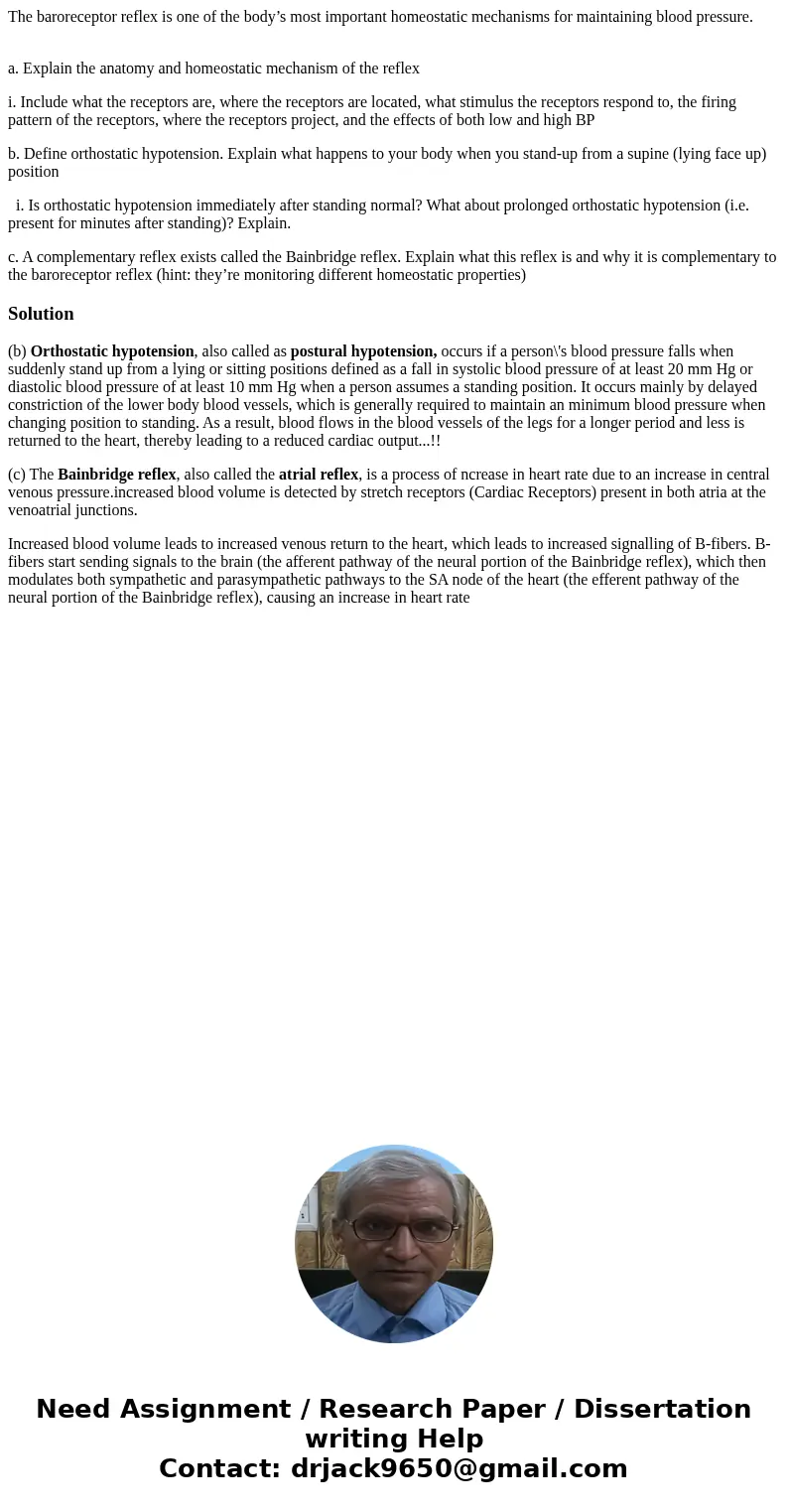The baroreceptor reflex is one of the bodys most important h
The baroreceptor reflex is one of the body’s most important homeostatic mechanisms for maintaining blood pressure.
a. Explain the anatomy and homeostatic mechanism of the reflex
i. Include what the receptors are, where the receptors are located, what stimulus the receptors respond to, the firing pattern of the receptors, where the receptors project, and the effects of both low and high BP
b. Define orthostatic hypotension. Explain what happens to your body when you stand-up from a supine (lying face up) position
i. Is orthostatic hypotension immediately after standing normal? What about prolonged orthostatic hypotension (i.e. present for minutes after standing)? Explain.
c. A complementary reflex exists called the Bainbridge reflex. Explain what this reflex is and why it is complementary to the baroreceptor reflex (hint: they’re monitoring different homeostatic properties)
Solution
(b) Orthostatic hypotension, also called as postural hypotension, occurs if a person\'s blood pressure falls when suddenly stand up from a lying or sitting positions defined as a fall in systolic blood pressure of at least 20 mm Hg or diastolic blood pressure of at least 10 mm Hg when a person assumes a standing position. It occurs mainly by delayed constriction of the lower body blood vessels, which is generally required to maintain an minimum blood pressure when changing position to standing. As a result, blood flows in the blood vessels of the legs for a longer period and less is returned to the heart, thereby leading to a reduced cardiac output...!!
(c) The Bainbridge reflex, also called the atrial reflex, is a process of ncrease in heart rate due to an increase in central venous pressure.increased blood volume is detected by stretch receptors (Cardiac Receptors) present in both atria at the venoatrial junctions.
Increased blood volume leads to increased venous return to the heart, which leads to increased signalling of B-fibers. B-fibers start sending signals to the brain (the afferent pathway of the neural portion of the Bainbridge reflex), which then modulates both sympathetic and parasympathetic pathways to the SA node of the heart (the efferent pathway of the neural portion of the Bainbridge reflex), causing an increase in heart rate

 Homework Sourse
Homework Sourse